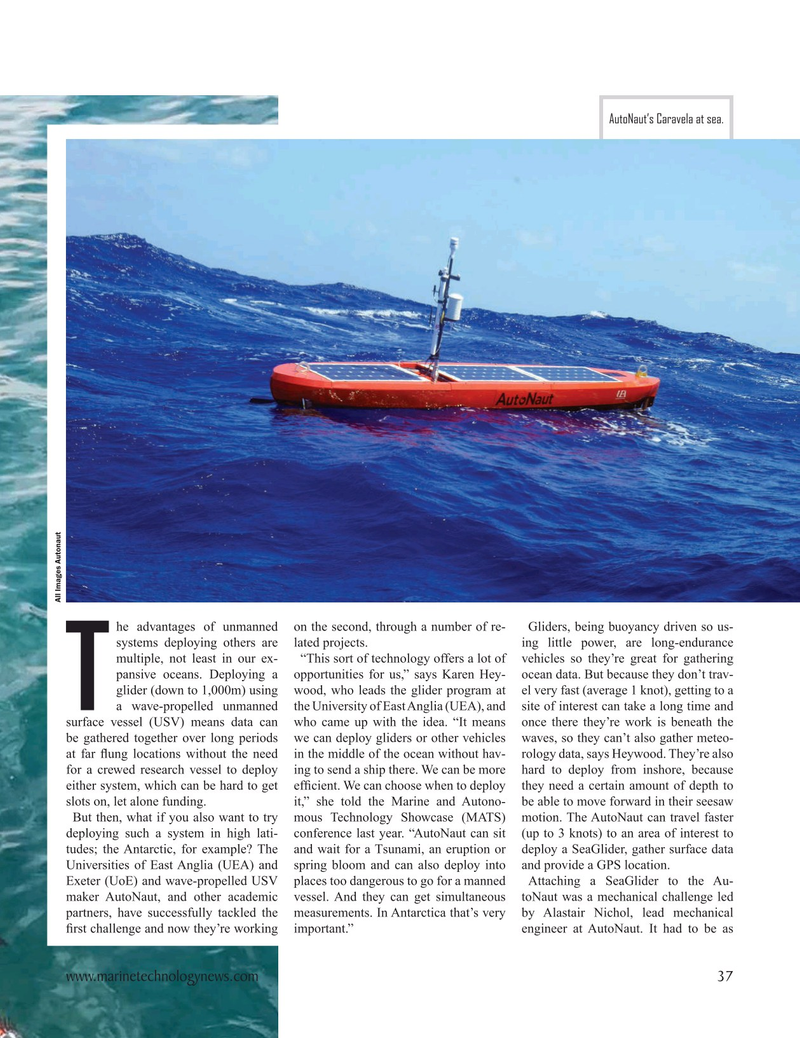
Page 37: of Marine Technology Magazine (November 2020)
Read this page in Pdf, Flash or Html5 edition of November 2020 Marine Technology Magazine
AutoNaut’s Caravela at sea.
All Images Autonaut he advantages of unmanned on the second, through a number of re- Gliders, being buoyancy driven so us- systems deploying others are lated projects. ing little power, are long-endurance multiple, not least in our ex- “This sort of technology offers a lot of vehicles so they’re great for gathering pansive oceans. Deploying a opportunities for us,” says Karen Hey- ocean data. But because they don’t trav- glider (down to 1,000m) using wood, who leads the glider program at el very fast (average 1 knot), getting to a
T a wave-propelled unmanned the University of East Anglia (UEA), and site of interest can take a long time and surface vessel (USV) means data can who came up with the idea. “It means once there they’re work is beneath the be gathered together over long periods we can deploy gliders or other vehicles waves, so they can’t also gather meteo- at far ? ung locations without the need in the middle of the ocean without hav- rology data, says Heywood. They’re also for a crewed research vessel to deploy ing to send a ship there. We can be more hard to deploy from inshore, because either system, which can be hard to get ef? cient. We can choose when to deploy they need a certain amount of depth to slots on, let alone funding. it,” she told the Marine and Autono- be able to move forward in their seesaw
But then, what if you also want to try mous Technology Showcase (MATS) motion. The AutoNaut can travel faster deploying such a system in high lati- conference last year. “AutoNaut can sit (up to 3 knots) to an area of interest to tudes; the Antarctic, for example? The and wait for a Tsunami, an eruption or deploy a SeaGlider, gather surface data
Universities of East Anglia (UEA) and spring bloom and can also deploy into and provide a GPS location.
Exeter (UoE) and wave-propelled USV places too dangerous to go for a manned Attaching a SeaGlider to the Au- maker AutoNaut, and other academic vessel. And they can get simultaneous toNaut was a mechanical challenge led partners, have successfully tackled the measurements. In Antarctica that’s very by Alastair Nichol, lead mechanical ? rst challenge and now they’re working important.” engineer at AutoNaut. It had to be as www.marinetechnologynews.com 37
MTR #9 (34-49).indd 37 11/3/2020 11:12:41 AM

 36
36

 38
38
